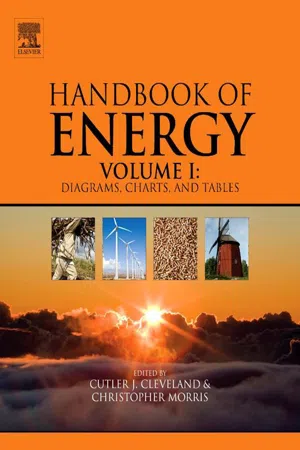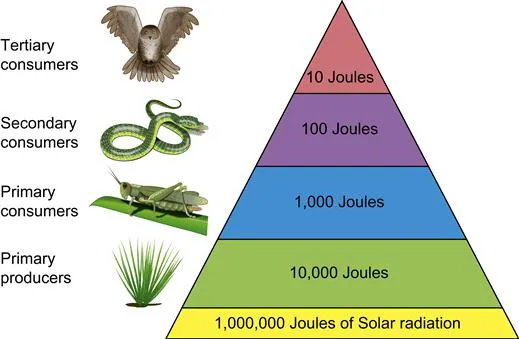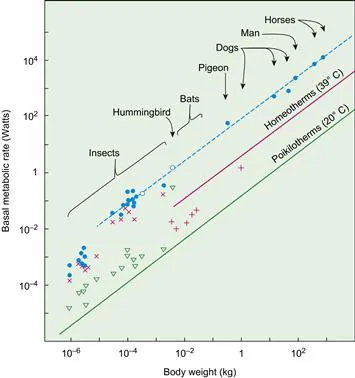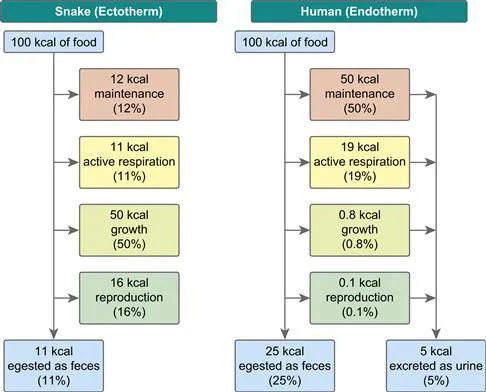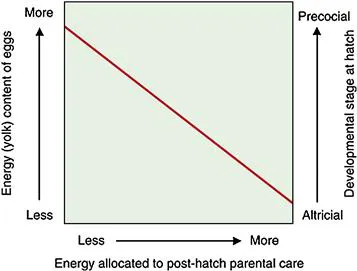Figure 1.1 Ecological or energy pyramid, with amount of energy at each trophic level.
Figure 1.2 The flow of energy through a river ecosystem in Silver Springs, Florida. Energy units are kilocalories per square meter per year (kcal/m2/yr). Biomass units represent the dry weight of organic matter (per square meter). The pyramid of numbers is derived from a census of the populations of autotrophs, herbivores, and two levels of carnivores on an acre (0.4 hectare) of a typical grassland. The figures represent number of individuals counted at each trophic level. Source: Energy data from Odum, Howard T. 1957. Trophic Structure and Productivity of Silver Springs, Florida. Ecological Monographs 27:55–112; adapted from Kimball, John W., Kimball’s Biology Pages, <http://users.rcn.com/jkimball.ma.ultranet/BiologyPages/W/Welcome.html>.
Figure 1.3 Organisms have ranges of tolerance for environmental factors (sunlight, temperature, pH, ec.). Optimum conditions are those that are most favorable for an organism to survive, grow and reproduce. This optimum is somewhere within the range of tolerance for that organism. Source: Adapted from Hall, C.A.S., J.A. Stanford and R. Hauer. 1992. The distribution and abundance of organisms as a consequence of energy balances along multiple environmental gradients. Oikos 65: 377–390.
Figure 1.4 Energy cost of locomotion for swimming, flying, and running animals, as a function of body size. Source: Data from Schmidt-Nielsen, K. 1972. Locomotion: energy cost of swimming, flying and running. Science 177, 222–228.
Figure 1.5 The relation between basal metabolic rate and body weight. Source: Data from Monteith, J.L. and M.H. Unsworth. 1990. Principles of Environmental Physics (Second Edition), (London, Edward Arnold).
Figure 1.6 Generalized energy budget used to examine reproductive energetics. Source: Kunz, Thomas H. and Kimberly S. Orrell. 2004. Reproduction, Energy Costs of, In: Cutler J. Cleveland, Editor-in-Chief, Encyclopedia of Energy, (New York, Elsevier), Pages 423-442.
Figure 1.7 Comparative energetics of a snake (ectotherm) and human (endotherm). Source: Data from Kaufmann, Robert K. and Cleveland, Cutler J. 2007. Environmental Science (McGraw-Hill, Dubuque, IA).
Figure 1.8 General relationship among energy content of eggs, energy allocated to post-hatch parental care, and development stage of offspring at hatch. Source: Kunz, Thomas H. and Kimberly S. Orrell. 2004. Reproduction, ...
